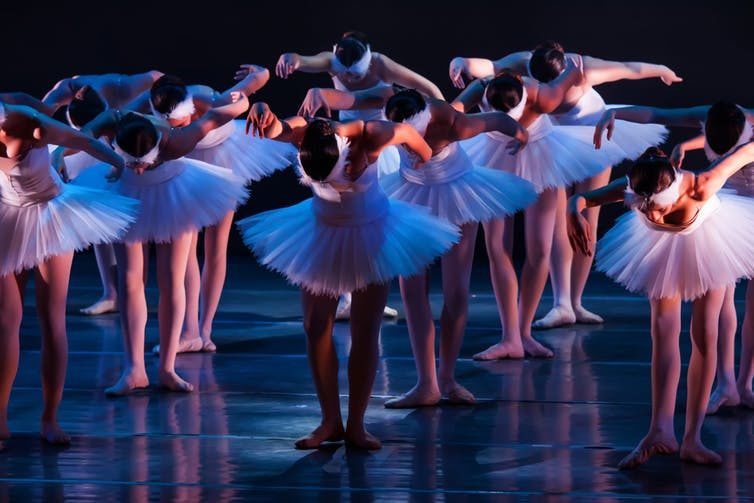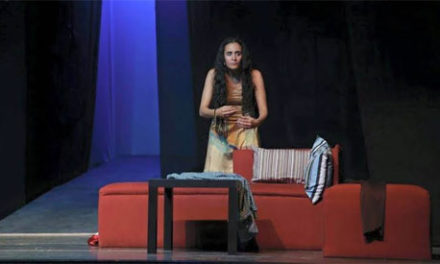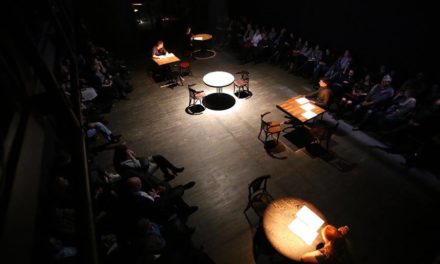Watching an opera, play, or ballet has become an increasingly cinematic experience. “Livecasting” performances directly onto screens is now a major part of these kinds of production. London’s Royal Opera House has an upcoming “Cinema Season” which includes live relays of Carmen and Swan Lake.
In the US, the New York Metropolitan Opera House started livecasting in 2006, while the UK’s National Theatre Live began in 2009. The Royal Opera House and the Royal Ballet joined in a year later.
It has not always been a popular move among purists. Reactions of some in the opera world–such as English National Opera–were initially negative. And as recently as 2016, opera star Renee Fleming claimed that cinema relays act as a drain on the live audience.
So what drives opera houses and ballet companies to continue to invest in cinema showings? And is there any evidence that it has a negative effect on audiences for the live experience?
The answer to the first question might appear to be obvious: cinema livecasts bring in bigger audiences and address the gulf in participation between opera’s audience and its public funding.
For the Metropolitan Opera in New York, which doesn’t rely on public subsidy, live relays to cinema are one of its few profit making activities. In 2015-16, livecasting generated 9.5% of their income at a cost of only 5.9% of their outgoings. Ten performances were played in over 2,000 cinemas, reaching an audience of around 2.6m.
One might even expect audiences for cinema screenings of performances to be much bigger than those in the theatre itself. But in the UK, this is not the case. According to its latest annual report, the Royal Opera House sold a total of 706,200 tickets for seats in the theatre for both opera and ballet in 2015-16, and only slightly more seats (767,800) in cinemas for live screenings.
All the world’s a stage
In 2012, I co-wrote an opera called Stefan And Lotte In Paradise which was premiered in Media City UK, Salford. It was performed in front of a live audience, but also streamed simultaneously to a second audience outside the theatre.
My colleague Yuwei Lin and I later wrote about the different experiences of these two audiences. Although there were some small differences in the reported enjoyment and the immersiveness of the experience, these differences were not as great as one might have expected. The mediated live-screened version came in a near second best to the live theatrical experience.
https://www.youtube.com/watch?v=oBeJzydid0I?wmode=transparent&start=0
Cultural academic Martin Barker’s analysis backs this up. On the whole, cinemagoers recognize livecasting as an excellent second-best option for those who cannot attend in person. Audience comments consistently refer to the convenience and cost-effectiveness of the livecast cinema experience, and there is a strong correlation between satisfaction of the cinema experience and the distance traveled.
Livecasting also allows those who have hearing difficulties to participate more effectively, research has shown. Not surprisingly, perhaps, the experience, according to Barker, appeals most to those over 60, with a relatively old age profile of those he studied.
But how effective is livecasting in generating new audiences for opera and ballet? Clearly, livecasting makes it possible for those who are denied access to high quality opera, ballet, and theatre for financial, geographical, or movement impairment reasons, and in this sense, it’s an audience which is “new” since they were not able to attend in person.
But this does not mean that they are new to the art form. Others have concluded that livecasting takes its place alongside DVD recordings and so on as “complementary products…for those whose tastes for opera have already been formed, rather than as products that recruit new consumers to the arts form.”
Does this justify Fleming’s claim that livecasting is draining the live audience away from opera? A shrinking live audience is certainly an issue for the Met in New York, where the percentage of seats occupied dropped from 84% in 2007 (the year after the Met began livecasting) to 65% in 2016.
But if the age profile of the UK audiences at cinema livecasts is anything like those in the US, audiences might well be declining simply because they are aging, and less able to attend in person.
Audience appetite
In Europe, the situation is healthier for the live audience. The Royal Opera House, for example, consistently operates on a 96% occupancy rate, and, as the New York Times reported recently, sells 39% of its tickets to those aged 40 or younger.
https://www.youtube.com/watch?v=NbKTpU4o5u0?wmode=transparent&start=0
But the same article reveals that the most spectacular growth in young (and therefore new) audiences is the 10% audience share for under 28-year-olds at the Paris Opera. This has been achieved not through cinema livecasts (which tend to appeal to the over 60s) but through a combination of free and cheap tickets for that age group– 30,000 seats in the last financial year–and bespoke shareable media content designed to be viewed on smartphones and tablets.
While livecasting will no doubt continue in the UK (not least because it addresses a common criticism of Arts Council funding being too London-centric), it’s far from certain that it will generate either the income seen in New York or the new audiences sought by publicly funded arts organizations.
![]() The Paris example shows instead that it is clever marketing, and a growth in the desire for live, unmediated experiences in a digitally saturated world, which can bring new audiences to an old art form.
The Paris example shows instead that it is clever marketing, and a growth in the desire for live, unmediated experiences in a digitally saturated world, which can bring new audiences to an old art form.
This article originally appeared in The Conversation on March 7, 2018, and has been reposted with permission.
This post was written by the author in their personal capacity.The opinions expressed in this article are the author’s own and do not reflect the view of The Theatre Times, their staff or collaborators.
This post was written by Alan Williams.
The views expressed here belong to the author and do not necessarily reflect our views and opinions.


















